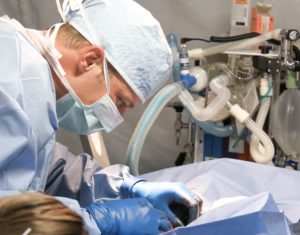Hemorrhoids Online Registration

Classifying Internal Hemorrhoids
Hemorrhoids (Piles) are swollen, bulging blood vessels in the walls of the anus and lower rectum. When the tissues supporting the vessels become inflamed and stretch, the vessels expand and cause its walls to thin. This often leads to bleeding. If the intense stretching and internal pressure continue, these already weakened vessels ultimately protrude from the anus.
Patients with hemorrhoids can suffer from internal hemorrhoids, external hemorrhoids, or mixed hemorrhoids. Internal hemorrhoids develop inside the rectum and form above the dentate line, while external hemorrhoids form below the dentate line. Mixed hemorrhoids refer to the presence of both internal and external hemorrhoids.
Internal hemorrhoids are graded based on their degree of prolapse (downward slippage):
- Grade I: No prolapse, only prominent blood vessels
- Grade II: Prolapse upon bearing down (defecation) but spontaneously reduces
- Grade III: Prolapse upon bearing down and requires manual reduction
- Grade IV: Prolapsed and cannot be manually reduced
Symptoms of Internal Hemorrhoids
Anal Itching – This symptom comes and goes, but worsens when hemorrhoids flare up. Because the itching happens sporadically, many patients incorrectly assume that the temporary relief means the problem resolved itself. Continuous scratching or excessive cleaning of the anal area may further harm the sensitive tissues and worsen symptoms.
Anal Pain – Because internal hemorrhoids form inside the anus, they’re usually not painful. However, patients may experience mild aching and discomfort during flare-ups. This pain can escalate if complications develop, such as thrombosis, infection and sphincter spasms (Proctalgia Fugax).
Rectal Lumps – In the case of internal hemorrhoids, a rectal lump typically becomes larger and more prolapsed immediately following a bowel movement. While a lump can be spontaneously reduced in the early stages of internal hemorrhoids, it may become non-reducible in its later stages. A lump can also be associated with other symptoms such as bleeding, itching or pain.
Rectal Bleeding – While this is the most common symptom of hemorrhoids, the severity of rectal bleeding varies widely from case to case. Besides hemorrhoids, conditions such as ruptured thrombosed external hemorrhoids, fissures, diverticulosis, colon cancer, colitis, polyps and angiodysplasias can also cause rectal bleeding. Any amount of rectal bleeding should be addressed ASAP.
Complications of Internal Hemorrhoids
Anal Itching – Excessive wiping and scratching of the anal area significantly damages the perianal skin and causes chronic dermatitis. Overusing over-the-counter hemorrhoid creams containing steroids can also further harm the perianal skin. Patients can potentially develop Pruritic Ani with persistent cyclic anal itching.
Thrombosed External Hemorrhoids – Thrombosed external hemorrhoids occur when the enlarged hemorrhoidal vein ruptures, and a blood clot forms in the hemorrhoid. These are usually quite painful and require immediate surgical intervention to remove the blood clot.
Anemia – Chronic blood loss from hemorrhoidal bleeding may cause anemia and severe iron deficiency, resulting in fatigue and weakness of the body. While this is rare, a few patients saw their hemoglobin drop to as low as 5 or 6.
Strangulated Hemorrhoids – An internal hemorrhoid becomes “strangulated” and extremely painful when persistent anal sphincter spasms cut off its blood supply. These spasms are caused by irritation from the prolapsed hemorrhoid, resulting in even more swelling of the hemorrhoid tissue. This eventually leads to tissue death.
Infection – When local inflammation triggered by the hemorrhoids causes swelling and erosion of the anorectal mucosa, the chance of infection increases. Bacteria and microorganisms established on feces can potentially attack and flourish within the damaged tissue.




